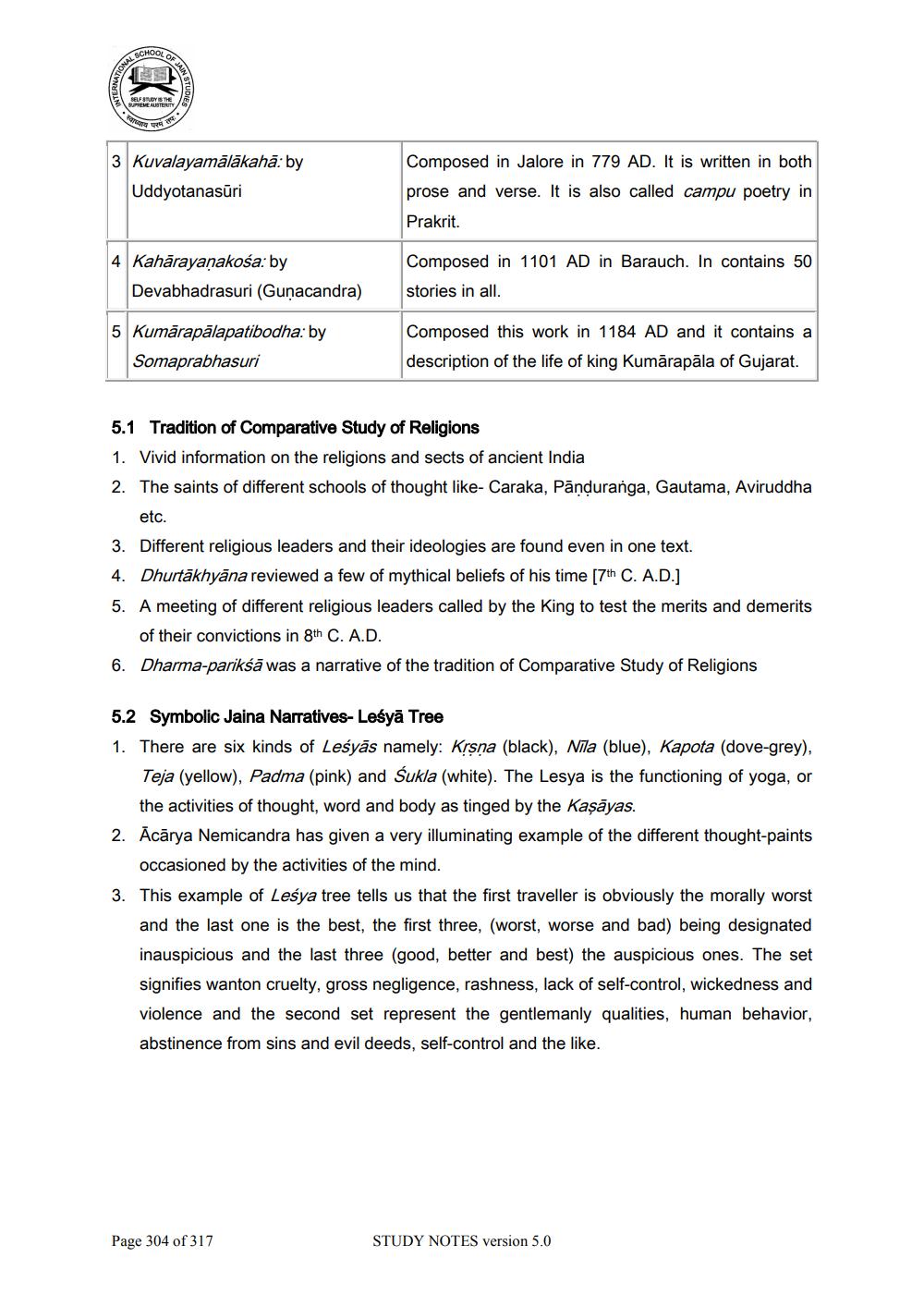________________
Kuvalayamālākahā: by Uddyotanasūri
Composed in Jalore in 779 AD. It is written in both prose and verse. It is also called campu poetry in Prakrit.
4 Kahārayanakośa: by
Devabhadrasuri (Gunacandra)
Composed in 1101 AD in Barauch. In contains 50 stories in all.
5 Kumārapālapatibodha: by
Somaprabhasuri
Composed this work in 1184 AD and it contains a description of the life of king Kumārapāla of Gujarat.
5.1 Tradition of Comparative Study of Religions 1. Vivid information on the religions and sects of ancient India 2. The saints of different schools of thought like- Caraka, Panduranga, Gautama, Aviruddha
etc. 3. Different religious leaders and their ideologies are found even in one text. 4. Dhurtākhyāna reviewed a few of mythical beliefs of his time [7th C. A.D.] 5. A meeting of different religious leaders called by the King to test the merits and demerits
of their convictions in 8th C. A.D. 6. Dharma-pariksā was a narrative of the tradition of Comparative Study of Religions
5.2 Symbolic Jaina Narratives-Leśyā Tree 1. There are six kinds of Leśyās namely: Krsna (black), Nila (blue), Kapota (dove-grey),
Teja (yellow), Padma (pink) and Sukla (white). The Lesya is the functioning of yoga, or
the activities of thought, word and body as tinged by the Kaşāyas. 2. Ācārya Nemicandra has given a very illuminating example of the different thought-paints
occasioned by the activities of the mind. 3. This example of Lesya tree tells us that the first traveller is obviously the morally worst
and the last one is the best, the first three, (worst, worse and bad) being designated inauspicious and the last three (good, better and best) the auspicious ones. The set signifies wanton cruelty, gross negligence, rashness, lack of self-control, wickedness and violence and the second set represent the gentlemanly qualities, human behavior, abstinence from sins and evil deeds, self-control and the like.
Page 304 of 317
STUDY NOTES version 5.0




